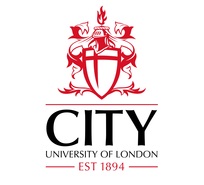
Increasing boiling fluid flowing efficiency from motive nozzles of two-phase ejectors.
Number: 101
Author(s) : SHARAPOV S., CHEKH O., HUSIEV D., KLYMENKO V., SHAPARENKO O.
Summary
The article contains the possibility of increasing boiling fluid flowing efficiency from expanding channels. This process takes place in the motive flow nozzle of a liquid-vapor ejector, working on the principle of thermal stream compression. Efficiency increasing by profiling the diffuser part of the nozzle. Modern industry uses nozzles, which are like de Laval nozzles, with straight walls of the diffusers. The authors suggest paying closer attention to profiling these nozzles, which might increase their efficiency and improve their gas-dynamic characteristics. For comparison, we choose a channel of a traditional form (with straight walls of the diffuser) and a channel of parabolic shape. The article contains a mathematical model to calculate the process of flowing the boiling fluid from the authors-designed channels – the peculiarities of this model that appear after changing the geometry of its streaming part. We obtain comparative analysis calculation results based on the mathematical model and the Ansys CFX workflow model. As a result of numerical calculation using the authors mathematical model and modelling in the Ansys CFX software package, it concludes that the parabolic shape of the diffuser is the most favourable. In the boiling process, the liquid central core is boiling at the optimum distance from the nozzle throat, and the flow of a stable vapor structure with the required pressure value for each regime forming at the outlet.
Available documents
Format PDF
Pages: 15
Available
Public price
20 €
Member price*
15 €
* Best rate depending on membership category (see the detailed benefits of individual and corporate memberships).
Details
- Original title: Increasing boiling fluid flowing efficiency from motive nozzles of two-phase ejectors.
- Record ID : 30028975
- Languages: English
- Subject: Technology
- Source: 12th International Conference on Compressors and their Systems
- Publication date: 2021/09
- Document available for consultation in the library of the IIR headquarters only.
Links
See other articles from the proceedings (63)
See the conference proceedings
Indexing
- Themes: Ejector systems, air cycle, Stirling cycle, other cycles)
- Keywords: Ejector system; Nozzle; Modelling; CFD; Simulation; Water; Geometry; Boiling
-
Optimal nozzle exit position for an ejector ref...
- Author(s) : RAND C. P., CROQUER S., POIRIER M., PONCET S.
- Date : 2022/04/11
- Languages : English
- Source: 7th IIR International Conference on Sustainability and the Cold Chain (Online). Proceedings: April 11-13 2022
- Formats : PDF
View record
-
1-D computational model of a motive nozzle for ...
- Author(s) : BANASIAK K., HAFNER A., SMOLKA J.
- Date : 2010/04/12
- Languages : English
- Source: 9th IIR-Gustav Lorentzen Conference on Natural Working Fluids (GL2010). Proceedings. Sydney, Australia, April 12-14, 2010.
- Formats : PDF
View record
-
Simulation of R718 flash boiling flow inside mo...
- Author(s) : LE Q. D., MEREU R., BESAGNI G., et al.
- Date : 2016/06/22
- Languages : English
- Source: 1st IIR International Conference of Cryogenics and Refrigeration Technology (ICCRT 2016). Proceedings: Bucharest, Romania, June 22-25, 2016.
- Formats : PDF
View record
-
CFD analysis of ejector in an ejector cooling s...
- Author(s) : WANG J., TAO L., WANG Y., et al.
- Date : 2007/07/21
- Languages : English
- Source: ICR 2007. Refrigeration Creates the Future. Proceedings of the 22nd IIR International Congress of Refrigeration.
- Formats : PDF
View record
-
Modeling of initially subcooled flashing vortex...
- Author(s) : ZHU J., ELBEL S.
- Date : 2016/07/11
- Languages : English
- Source: 2016 Purdue Conferences. 16th International Refrigeration and Air-Conditioning Conference at Purdue.
- Formats : PDF
View record
